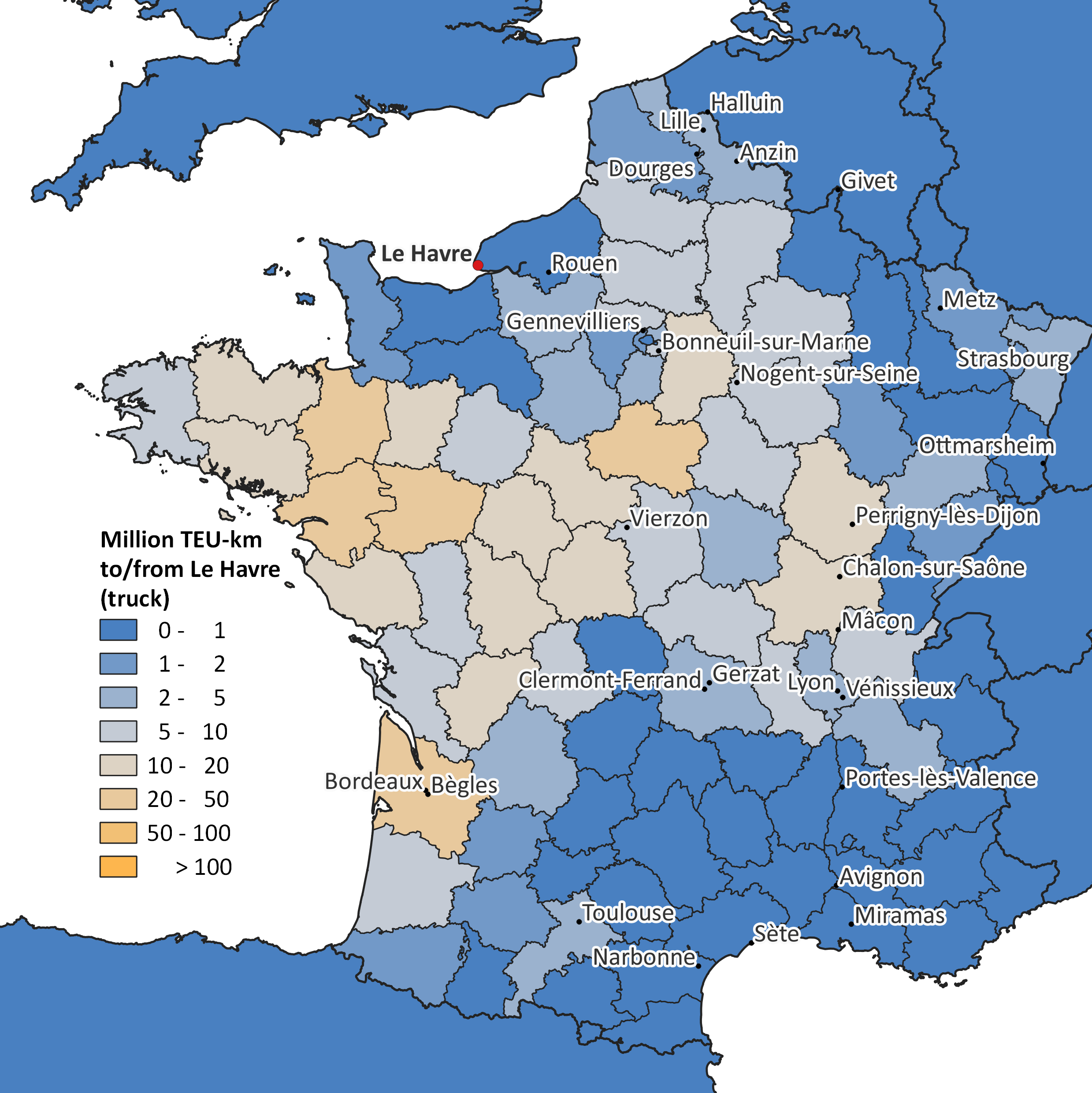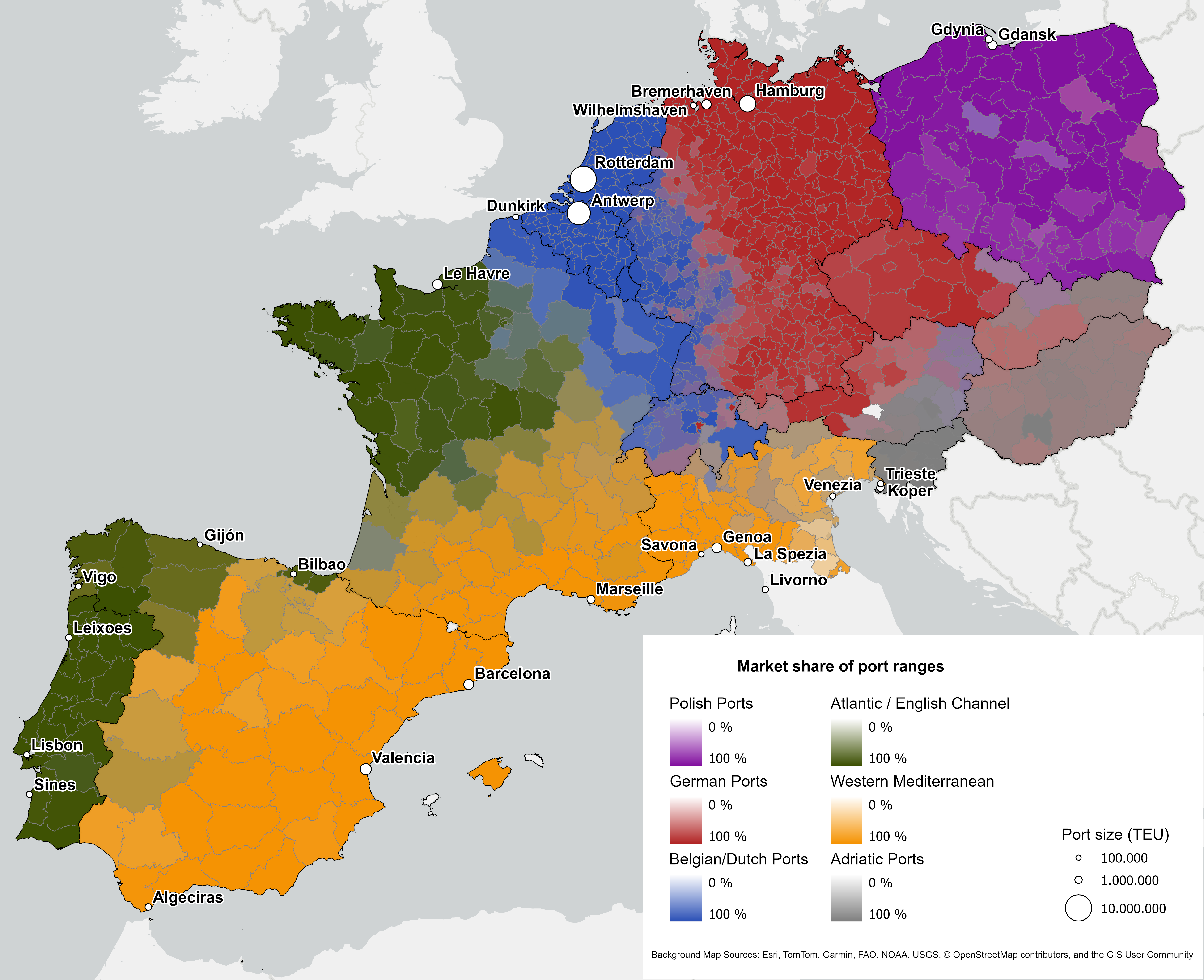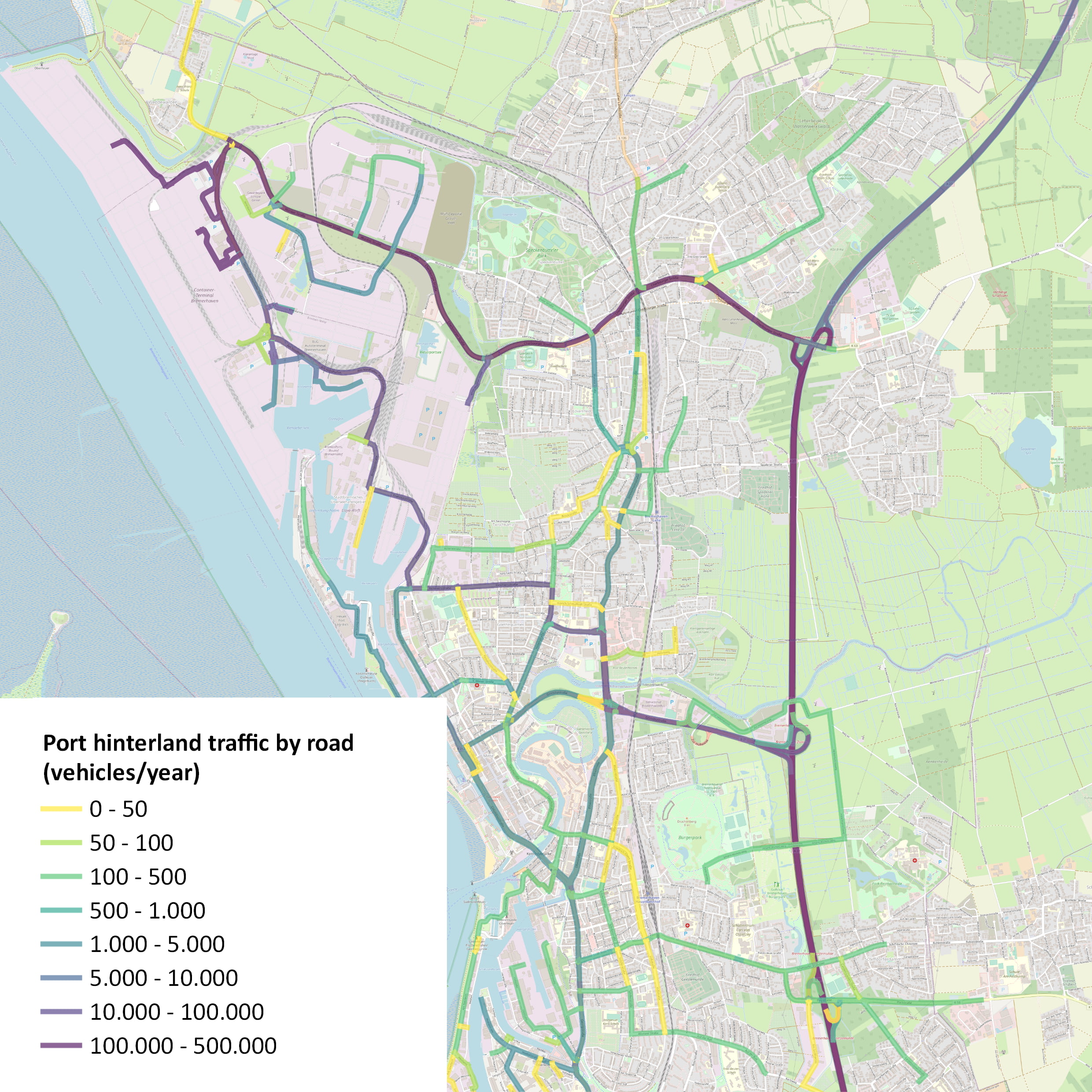ISL European Container Traffic Model (ECTM)
The most complete source on European container traffic
There is little information on European ports’ hinterland traffic in official statistics. ISL’s European Container Traffic Model (ECTM) closes this gap. For each European main port, it includes the following:
- Shortsea and feeder traffic by country
- Hinterland traffic by mode
- Hinterland origin/destination (NUTS)
- Inland terminal locations for rail and barge traffic
- Direction (import/export)
- Full/empty TEU
Clients can explore all dimensions of the container port hinterland traffic in customised GIS dashboards.
Frank van der Laan

For Ports
ECTM data gives ports unique insight into their market position, covering origin and destination of hinterland and seaborne traffic.
ECTM offers:
- Market share analysis for hinterland, shortsea and deepsea traffic
- Competitiveness analysis
- Modal shift potential
Clients include Port of Rotterdam, Port of Antwerp-Bruges, Grand Port Maritime de Dunkerque, Hamburg Port Authority and bremenports.

For Liner Operators
Partnering liner operators receive a detailed assessment of their regional market shares for carrier haulage hinterland and feeder traffic.
ECTM offers:
- Analysis of carrier haulage market shares for hinterland and feeder traffic
- Gateway port choice
- Intermodal connections
Most major deepsea, shortsea and feeder liner operators active in European markets have cooperated with ISL on ECTM.

For public authorities
For infrastructure planning and traffic management, our Cargo Traffic Simulations based on ECTM data provide valuable insights.
ECTM offers:
- Demand by transport corridor
- Container traffic forecasts
- Emissions monitor
- Economic impact of ports in hinterland regions
ECTM data has been used in various projects for the European Commission, the German Federal Ministry of Transport and several regional authorities.



